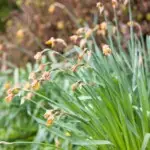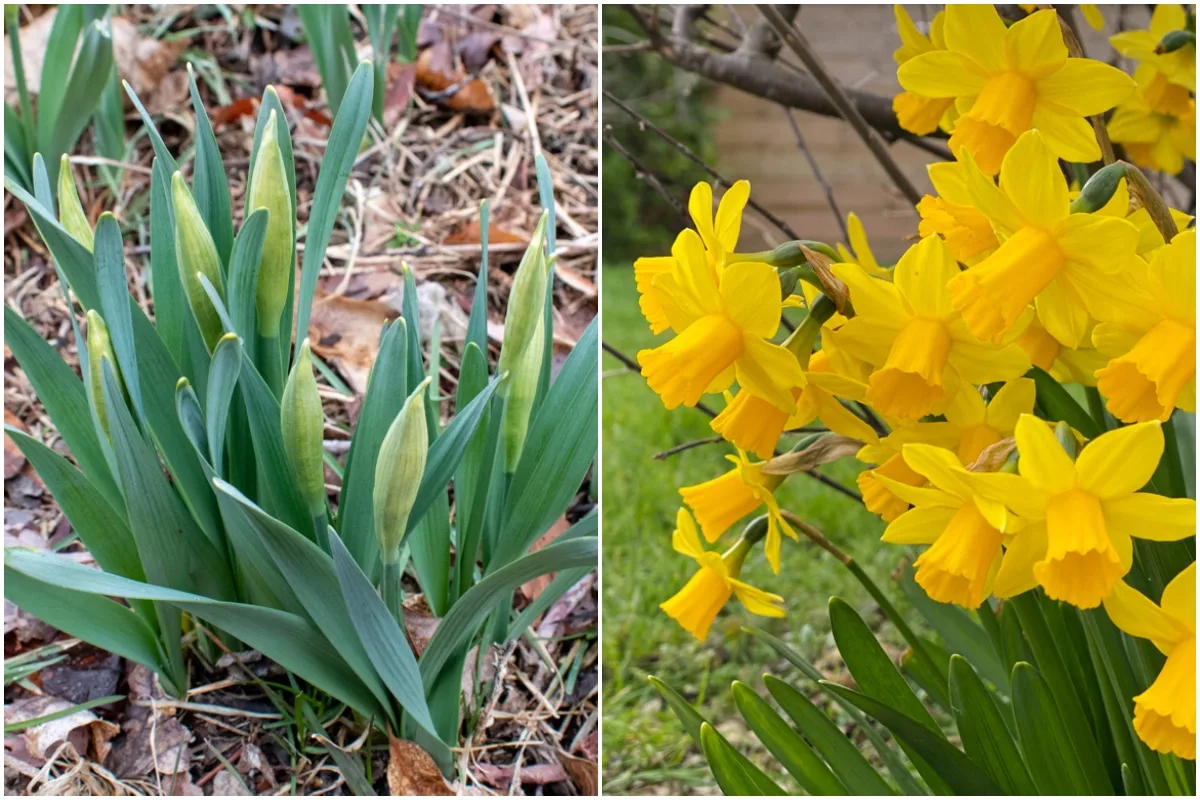
After a long, dreary winter, there’s nothing like the visual shock of yellow splashed throughout a dull landscape. Daffodils seem to be the very definition of happy, bringing an end to another winter. But once the flowers have faded, there are steps to take to ensure their exuberant return the following year.
Our love affair with daffodils goes beyond their bright spring display.
They’re a perennial favorite because they’re some of the easiest bulbs to plant and maintain. If there ever was a truly set-it-and-forget-it flower, it’s the daffodil.
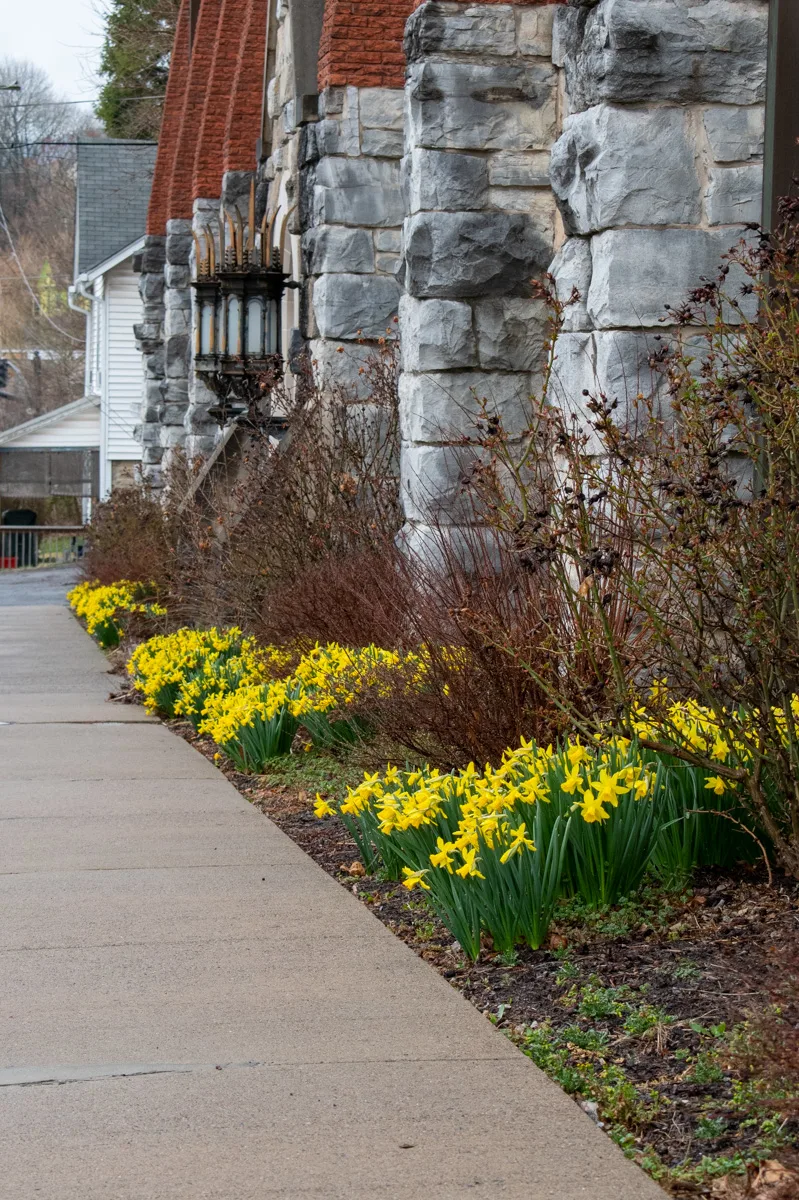
Generations of gardeners have planted daffodils in the fall, and with minimal effort, those same bulbs have naturalized and are still enjoyed today.
But they aren’t completely hands-off.
If you want to ensure your daffodils continue to grow and spread for decades, you need to care for them properly once the blooms have faded.
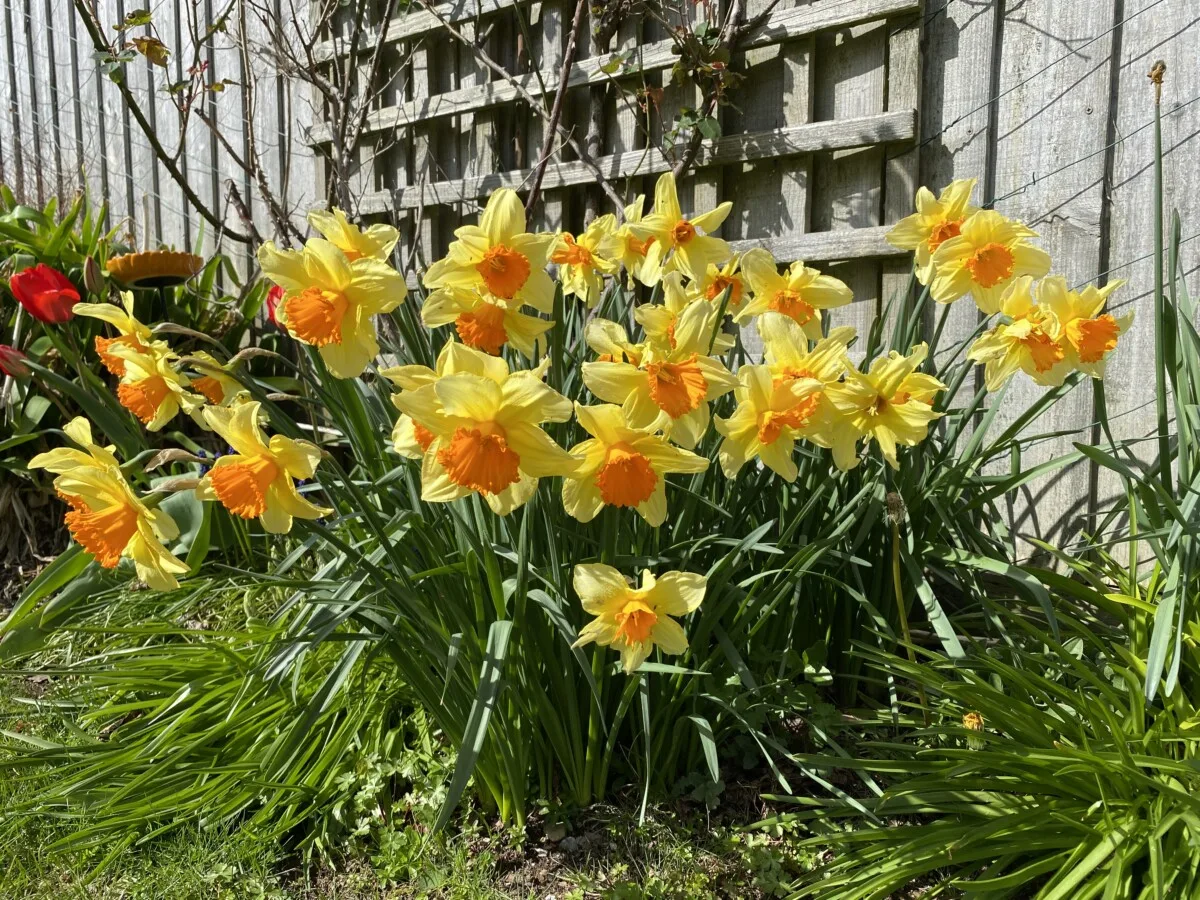
General After-Bloom Care
Daffodils grow from bulbs. Many gardeners mistakenly assume the bulb is a seed, but it’s an entirely different organ. The bulb acts as a storage device, collecting nutrients needed to regrow the plant again the following spring, from flowers to foliage.
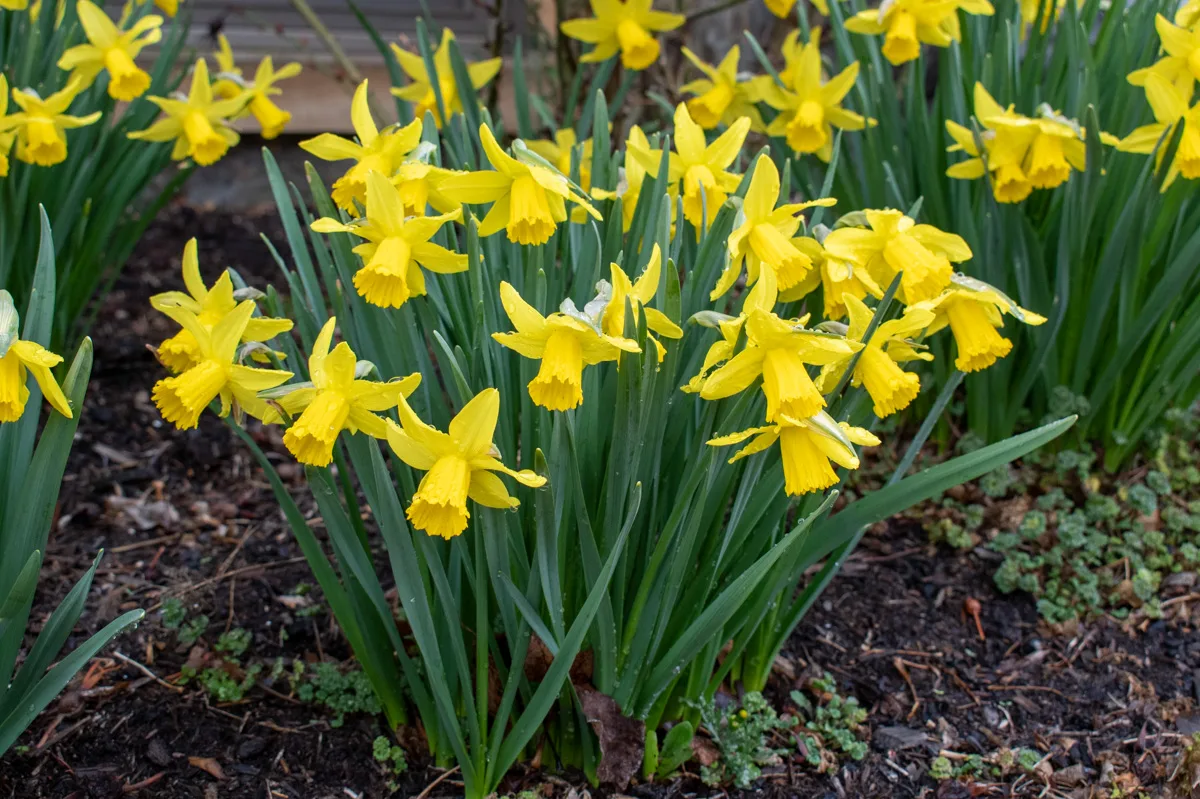
It’s incredible to think next year’s daffodils start after the current ones die back in the spring. But only if you let them. While you may be tempted to cut the leaves back once the flowers fade, that foliage still has a job to do.
A little post-bloom care is in order, but don’t worry, most of it is pretty hands-off. Follow this routine, and you’ll have gorgeous flowers every single year.
Remove the Spent Flowers
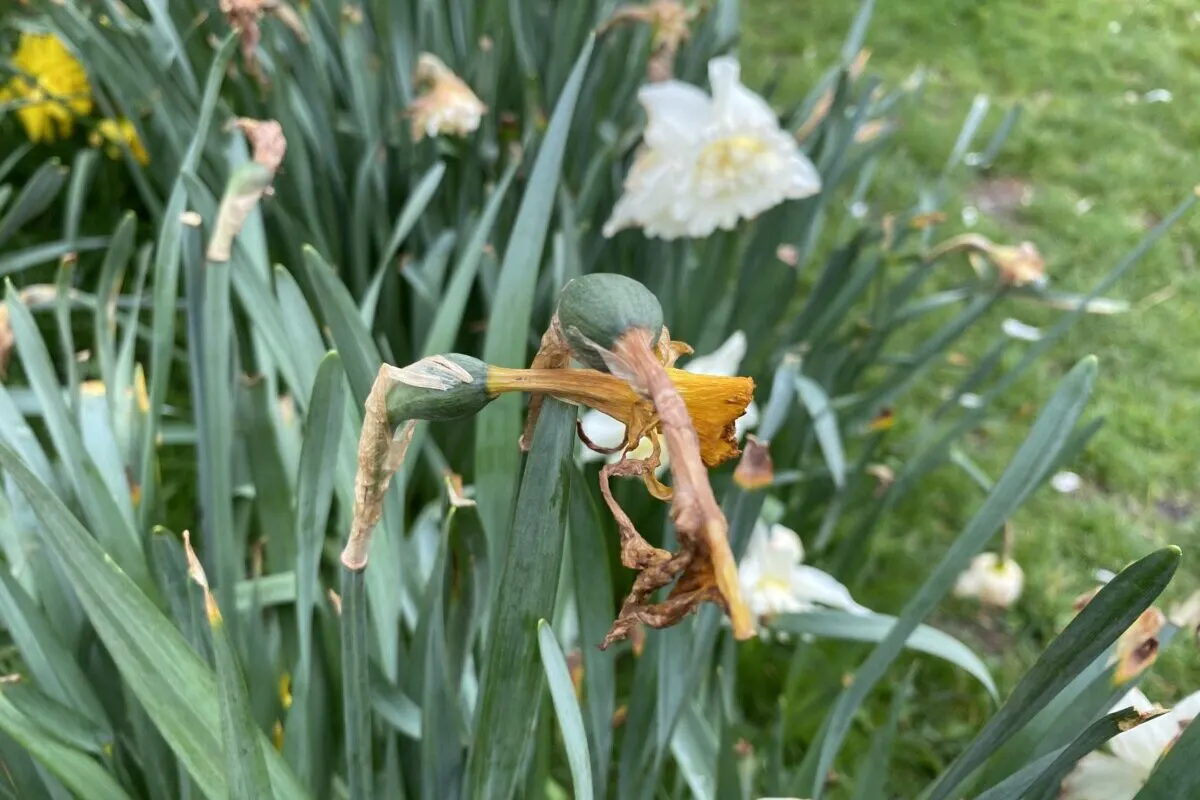
Once daffodils start to fade, snap off the decaying flower head. Try to do this before they become completely brown. You can also cut the stem back. Removing both allows the plant to focus its energy on storing nutrients in the bulb via its leaves.
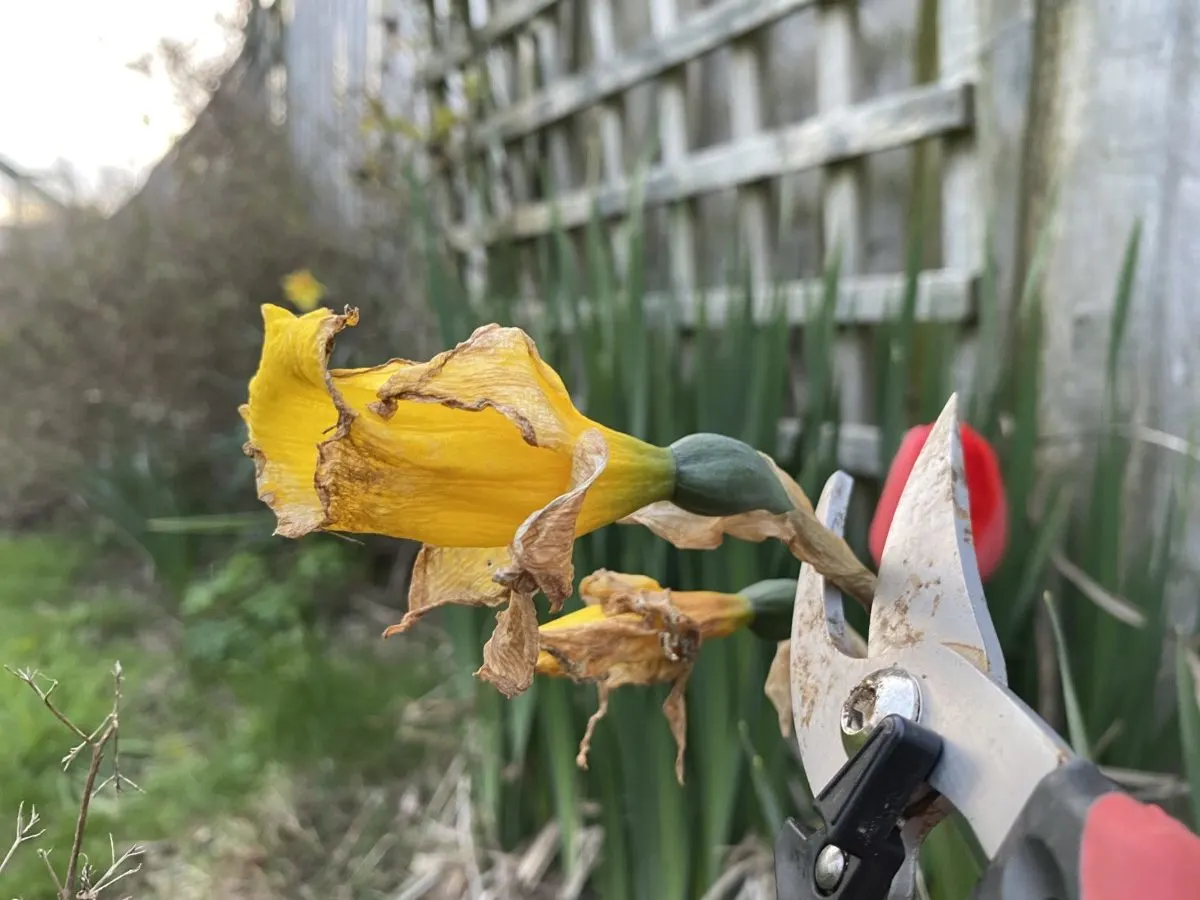
You might want to consider leaving some of the seed pods in tact. Allow them to mature and once they’ve fully dried out, you can harvest the seed pod, extract the seeds and grow your own daffodils from seed.
We’ve got a full guide to doing that right here.
Let the Leaves Grow
The leaves are probably the most important part of the above-ground plant. They act like little solar panels, collecting and storing nutrients in the bulb to ensure the plant will bloom next year. Once the flowers are done, continue to water the plants and let the foliage grow.
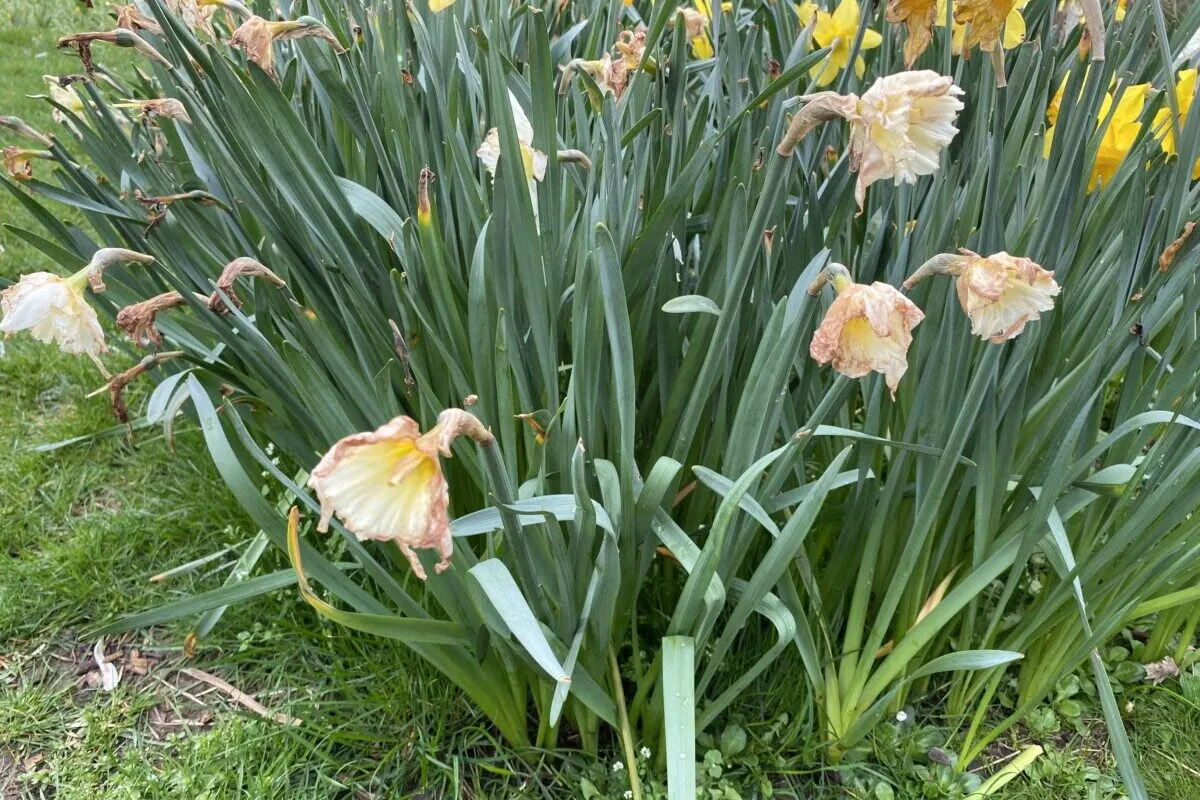
Don’t braid, bend or cut the foliage. If you have naturalized daffodils growing in your yard, you’ll have to resist the temptation to mow the tops off when you resume cutting your grass.
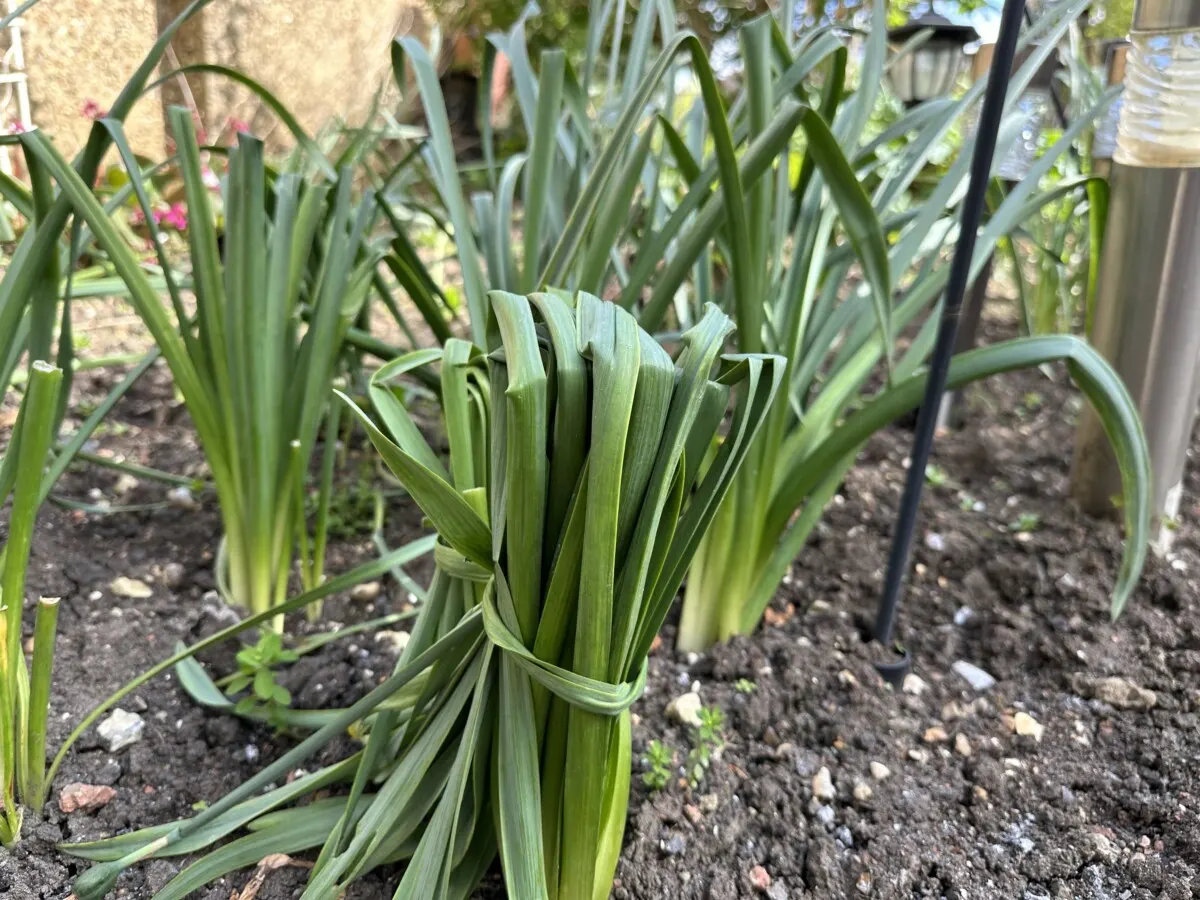
If you have an overzealous grass warrior in your house (you know, Mario Andretti on a riding mower), you may want to tag daffodil clumps with survey flags, so they don’t accidentally cut the leaves. Or hide the keys to the riding mower for a few weeks.
In about six weeks, the leaves will begin to dry up and turn yellow. The plant is entering dormancy, and now you can go ahead and mow off the leaves or simply let them continue to fade and dry out. If you were watering the plant, stop at this point.
Top Up with Compost and Only Fertilize if Needed
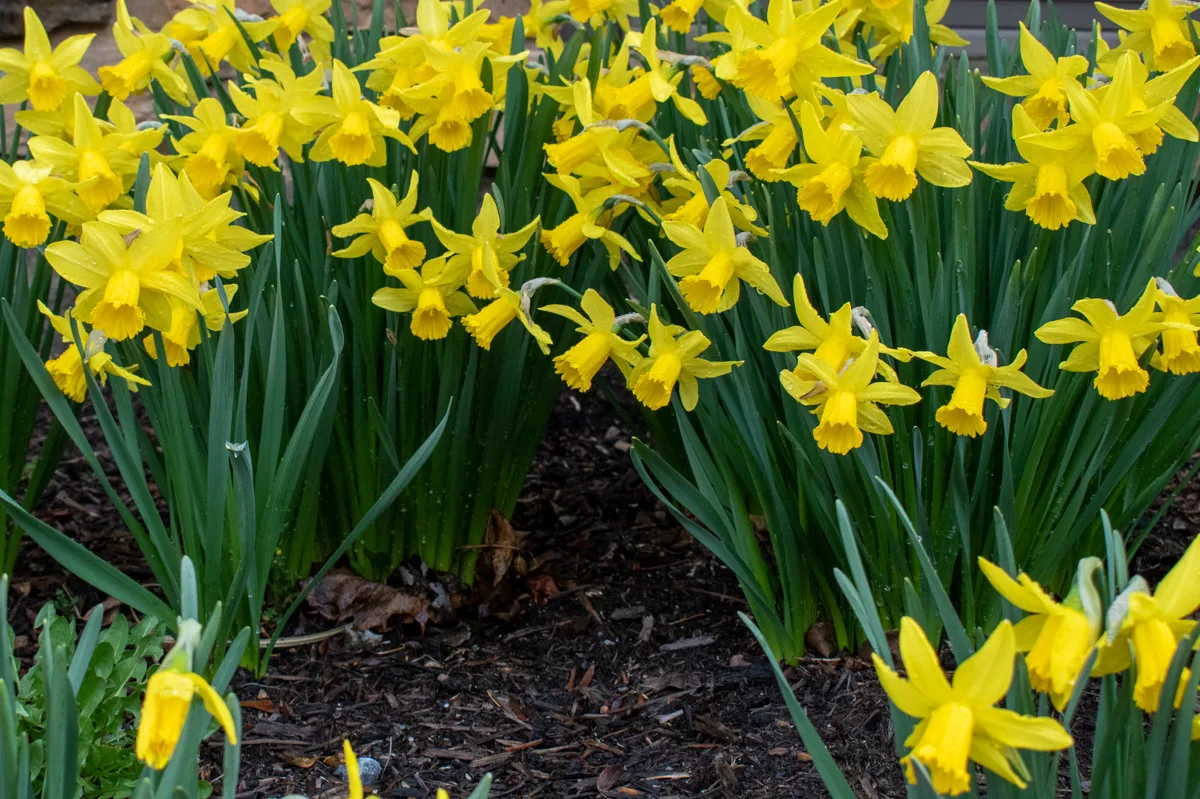
Daffodils aren’t heavy feeders, so they don’t generally require frequent or heavy fertilizer. Unless you’ve done a soil test and know your soil is lacking in specific nutrients, they will happily grow, bloom and spread year after year without the need for fertilizer.
However, adding a little compost around their base, once the blooms fade is the best way to ensure they have all the nutrients they need in the soil. Adding compost each year continually improves and conditions the soil while adding back nutrients.
Potted Outdoor Daffodils
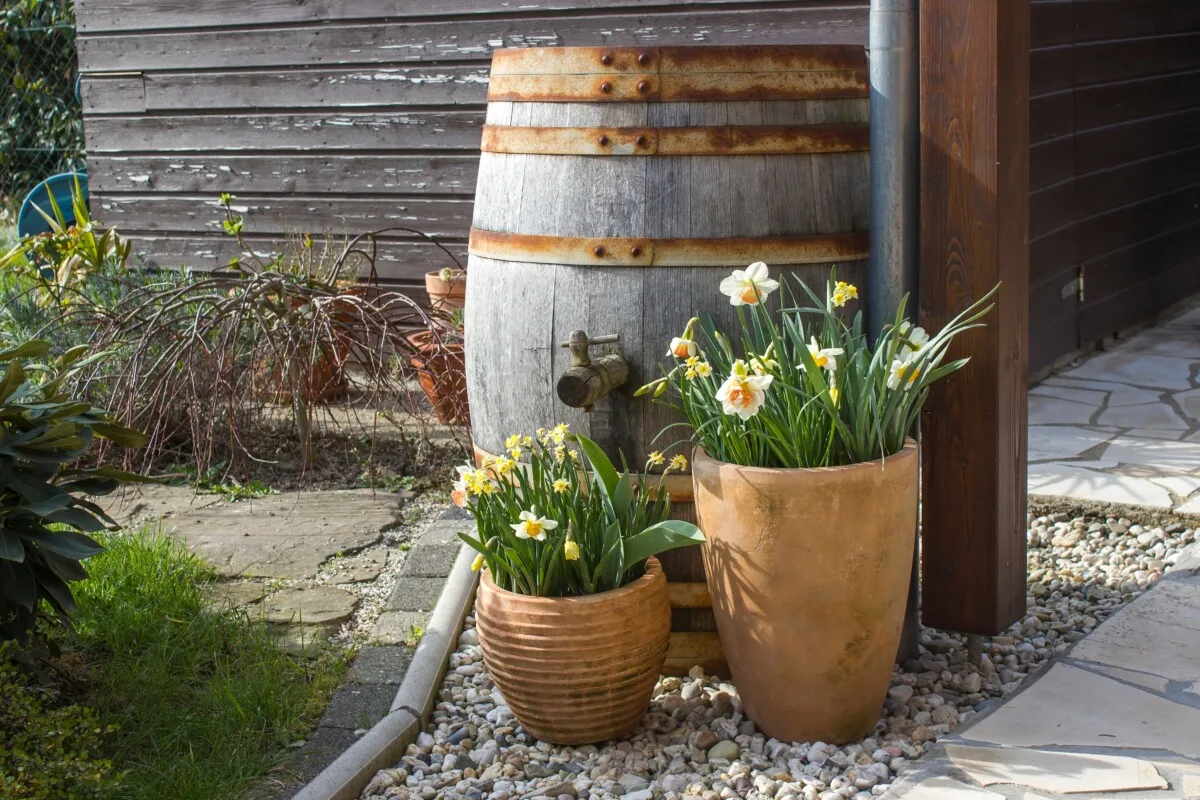
A large terracotta pot filled with bright yellow daffodils on your porch is a welcome greeting to visitors each spring. But potted daffodils require slightly different care than those grown in the ground.
Similarly, you will need to remove the flowers once they fade and allow the foliage to continue to grow. Add a layer of compost around the edges of the pot and continue to water the leaves until they begin to turn yellow and die back naturally.
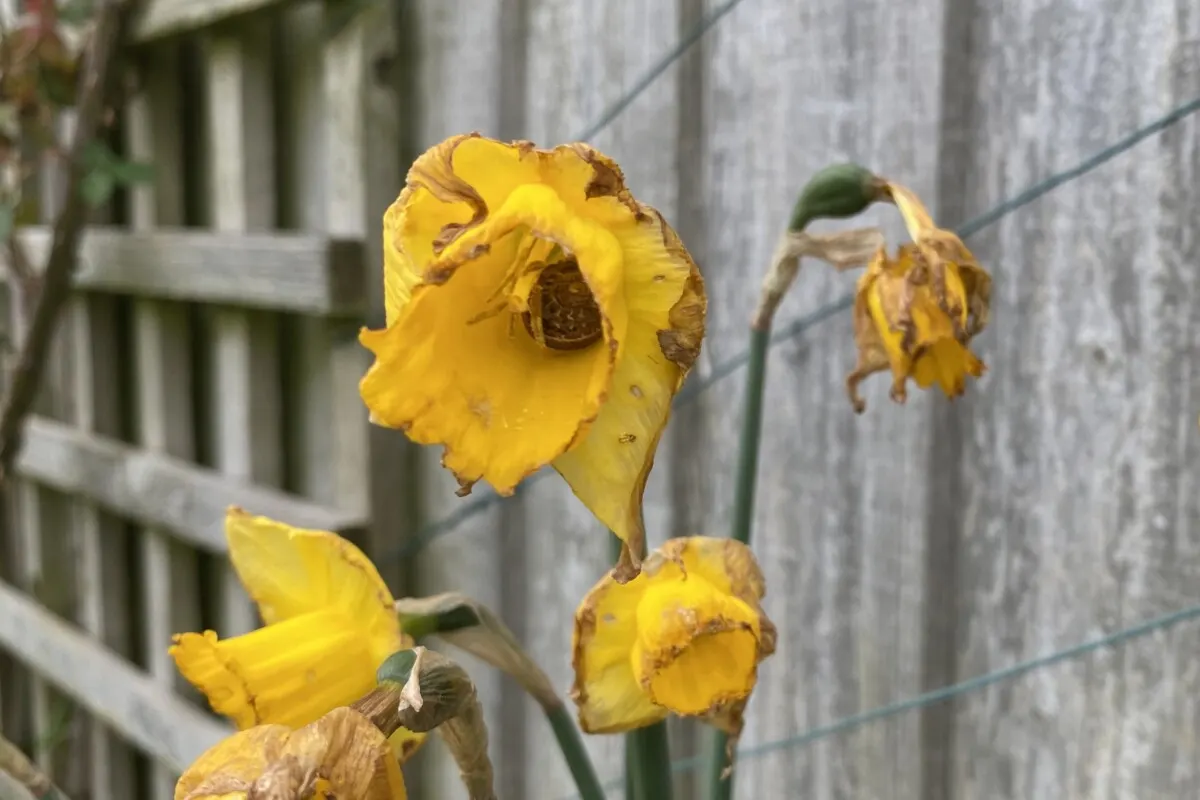
At this point, you need to keep the bulbs dry so they can enter dormancy. Move the pots into a shed or garage where they will be out of the weather, or leave them outside, tucked away somewhere they won’t receive a lot of rain.
Alternatively, you can turn the pots on their sides during the summer, allowing the bulbs to dry out and enter dormancy.
In the fall, about six weeks before the first frost, begin to water them again. You will need to bring the pots inside if you live in an area that experiences cold winters. The small amount of soil in potted containers is not enough to protect the bulbs from cold damage. You can move them outside again in late winter to early spring. Add a bit more compost to the top of the pot before the leaves come up again.
Storebought Potted Daffodils
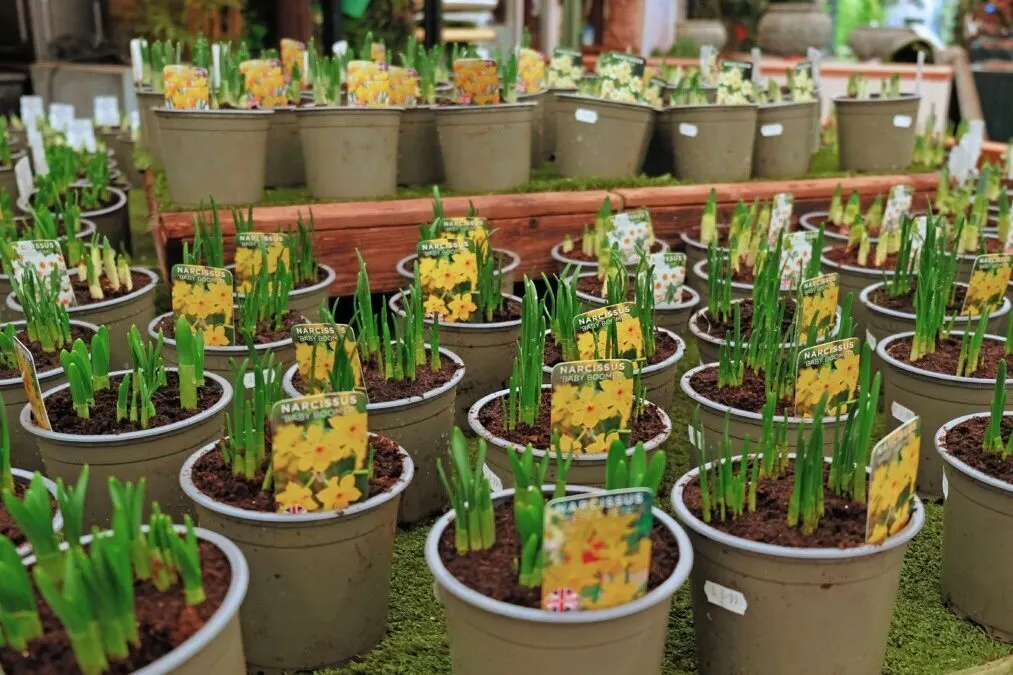
Unlike storebought tulips, which are forced and finished, forced daffodil bulbs can bloom again. You only need to be patient. Treat them the same as outdoor potted daffodils. Or, if you want to plant them, transfer the bulbs to your desired location in early summer after the foliage has died off.
Eventually, they will resume a natural blooming cycle, although you may get blind daffodils for the first spring after planting them.
Blind Daffodils This Spring?
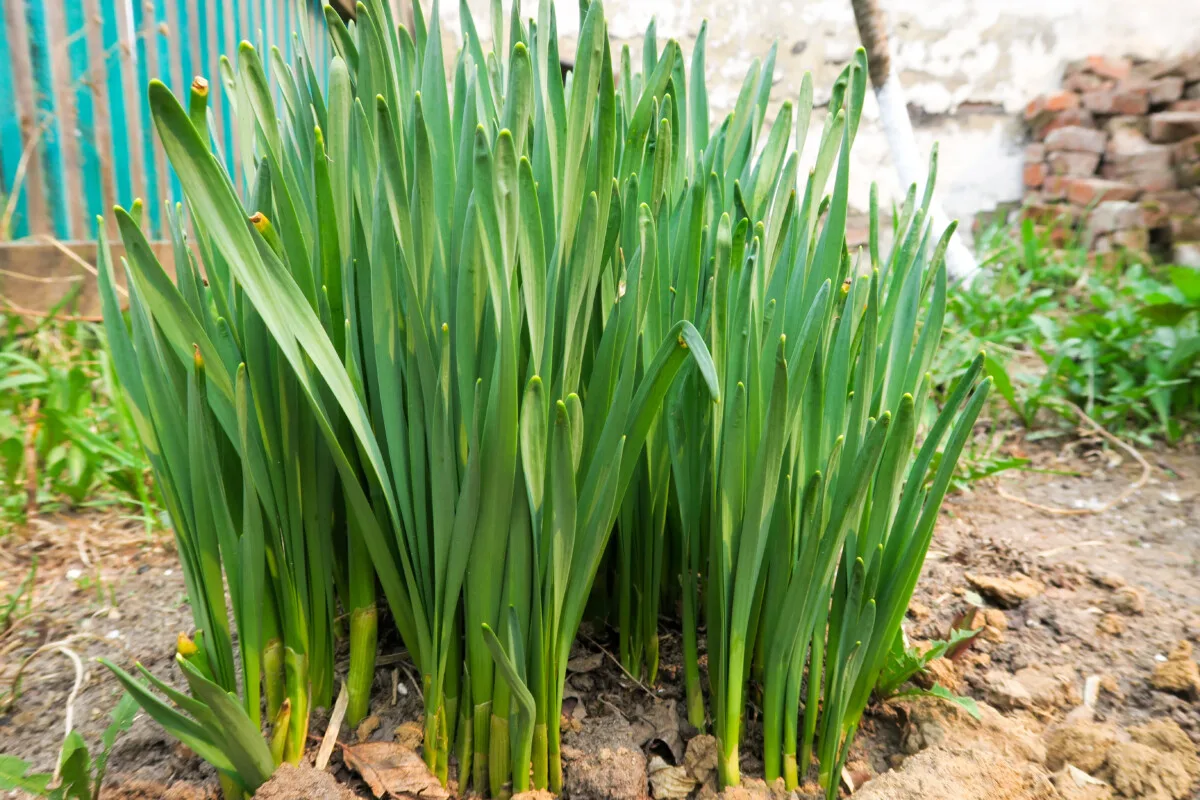
If you noticed plenty of foliage this year, but no blooms, you’ve got blind bulbs on your hands. There are several reasons why bulbs will produce blind daffodils. The usual suspects are:
- crowded bulbs that need to be divided
- cutting the foliage off too early the previous year
- too much water throughout the summer, which can rot the bulb and prevent it from entering a dormant state.
Don’t worry, by correcting these issues, you can encourage the bulbs to bloom again.
To ensure the bulbs aren’t too crowded, dig them up in the fall and divide them every three to four years.
If you cut the leaves off to early the prior year, you’ll need to supplement with fertilizer. Choose one that’s higher in phosphorous than nitrogen and potassium to help rebuild the strength of the bulb.
If daffodils are planted in a location that receives too much water, wait until the leaves have died back and then dig them up and relocate them.
The bulbs should begin flowering again in a year or two once their needs are taken care of.
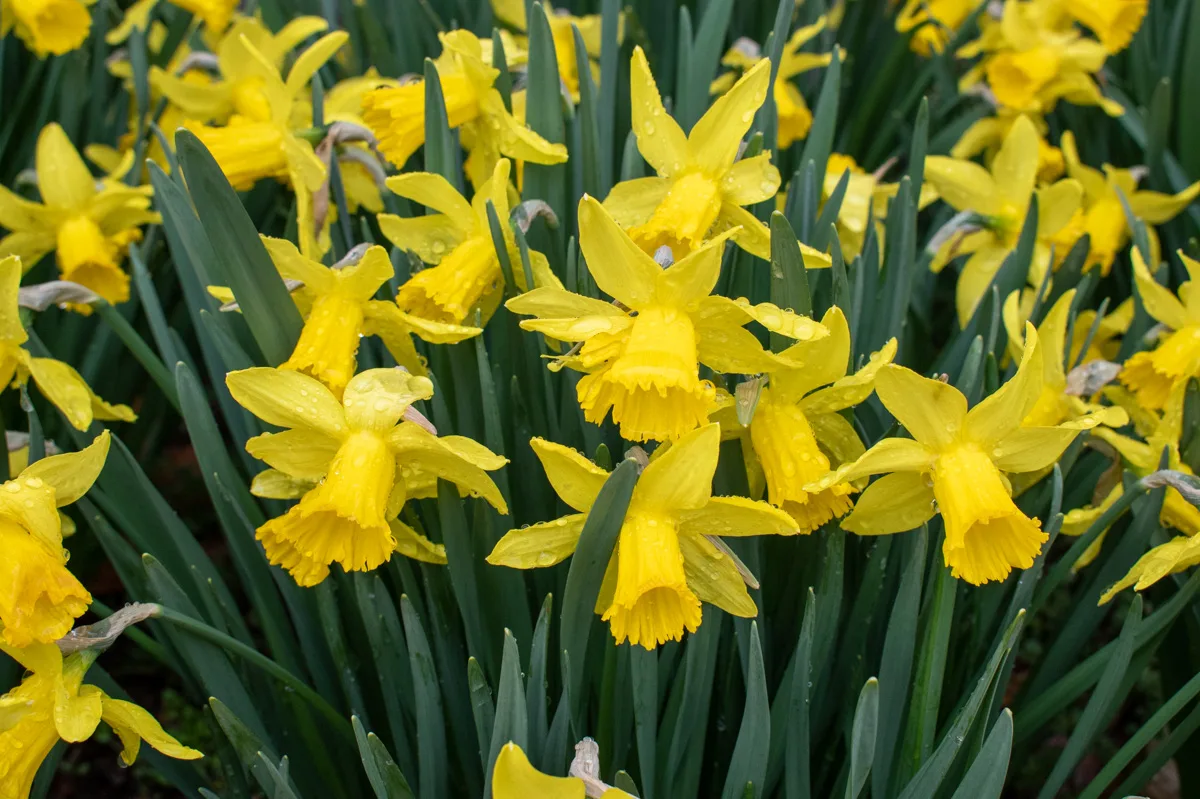
And that’s all there is to caring for daffodils once they have finished blooming for the year. Want to learn even more about everyone’s favorite spring flowers? You may be interested in the below.

Get the famous Rural Sprout newsletter delivered to your inbox.
Including Sunday musings from our editor, Tracey, as well as “What’s Up Wednesday” our roundup of what’s in season and new article updates and alerts.


